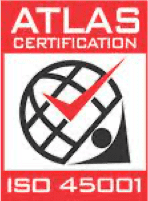FAQs
Home » FAQs
Here you'll find answers to our most frequently asked questions.
Select FAQs category from the list below.
About Asbestos
What is asbestos?
Asbestos is a term for a naturally occurring fibrous silicate mineral, mined in Australia until late 1984. It contains strong fibres that have excellent flexibility, durability, fire resistance and insulating properties.
The versatility of asbestos made it an ideal building material, with over 3000 applications. It is said approximately one-third of homes in Australia contain asbestos products.
Asbestos-containing materials (ACMs) can be categorised as friable and non-friable (or ‘bonded’). Non-friable asbestos, where it is mixed with other materials like cement, is the type most commonly found in our building environment and in homes. Friable asbestos was more commonly used for industrial applications. Some examples of residential uses of friable asbestos include asbestos-backed vinyl and lagging to hot water pipes.
How do I know if it is asbestos?
How long before sample results are received?
Where can I find asbestos in my home?
Some of the areas you may find asbestos in your home include:
- Bathroom – ceilings, walls, flooring
- Laundry – ceilings, walls, flooring
- Kitchen – splashbacks, flooring, walls, ceilings
- Floor – tile underlay, vinyl floor tiles, sheet vinyl
- Walls – internal linings, external cladding
- Fencing – corrugated sheeting, profiled sheeting
- Roof – corrugated sheeting, shingles
- Electrical switchboards
Where is asbestos used in general building?
Approximately one-third of all homes built in Australia contain asbestos products. As a general rule, if your house was built before the mid-1980s, it is highly likely it would contain asbestos-containing materials. If your house was built in South Australia after 1990, it is unlikely that it would have asbestos-containing materials. Asbestos use in Australia was outlawed in 2003.
The use of ACMs in the home has been extensive and there are many areas in the home where ACMs can be found including (but not limited to):
- roof sheeting and capping
- guttering
- gables, eaves
- water pipes
- flue pipes to hot water services or heaters
- wall cladding/planking
- sheet vinyl flooring
- vinyl tiles
- tile underlays
- electrical switchboards
- flexible building boards
- imitation brick cladding
- fencing
- carports and sheds
- waterproof membranes
- telecommunications pits
- window putty in steel frame windows



